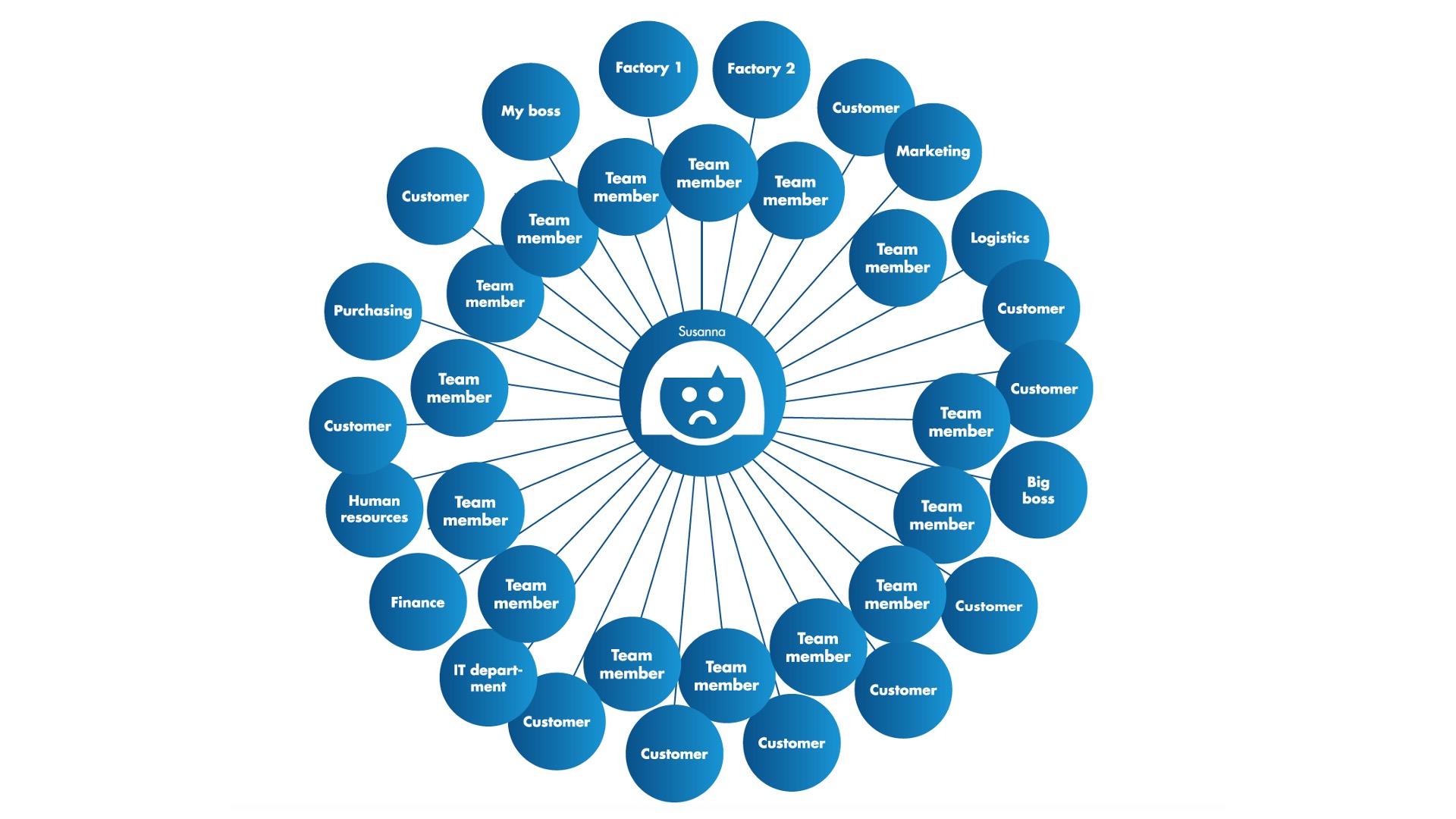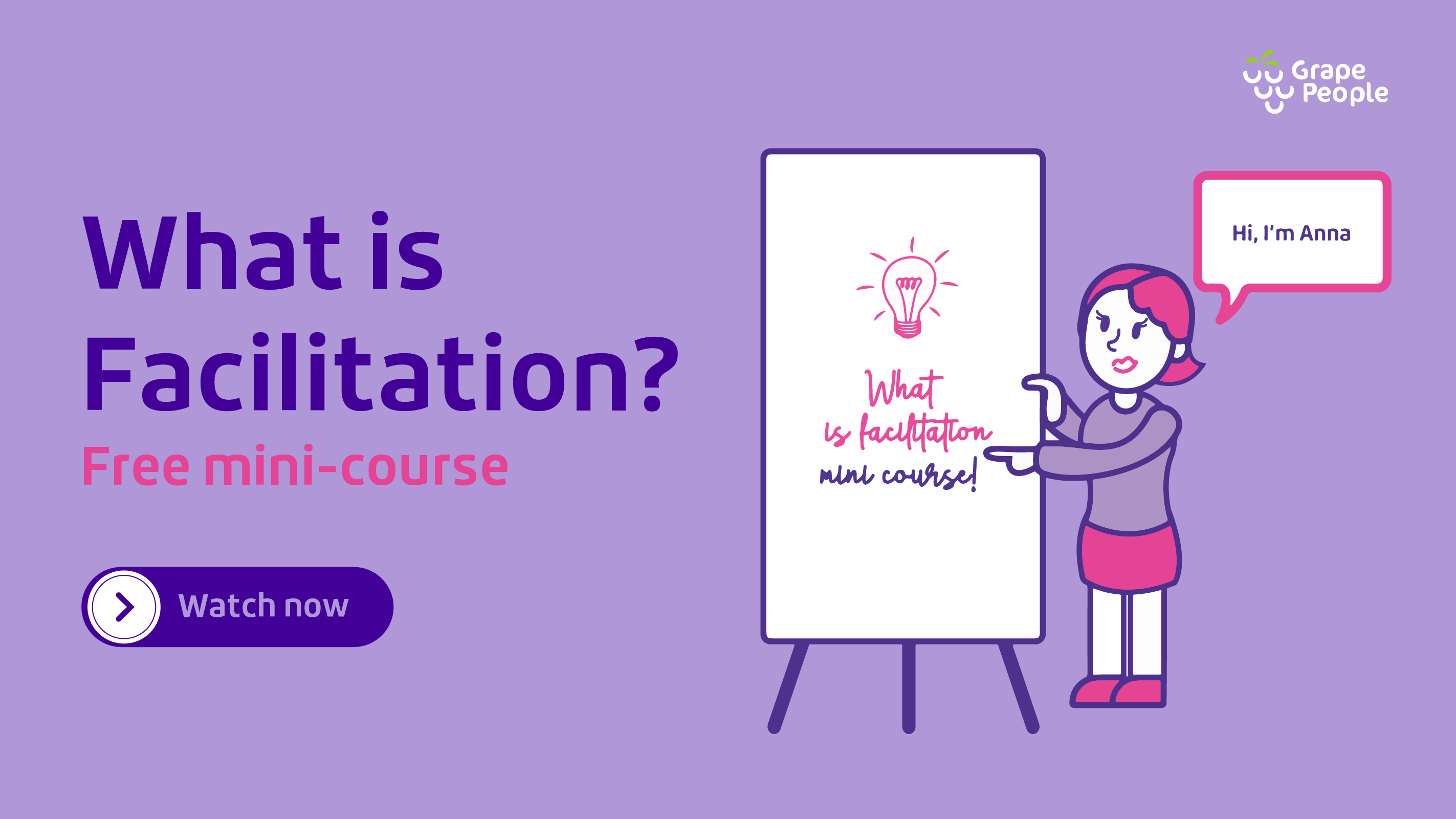What is facilitation?

Facilitation is not hard to define. For example;
Facilitation uses group tools during meetings and workshops to align people towards a shared goal.
That’s not too complex, is it? It paints a picture of the purpose of facilitation, but it doesn’t tell us much about how facilitation works. How about if we add a bit more context to our definition of facilitation:
Modern facilitation techniques became popular in large part to the work done by David Straus and Michael Doyle. In the 1970s and 1980s, they examined how business meetings were commonly structured and made improvements such as having a content-neutral person control the meeting and trying to involve meeting participants more.
Great, now our definition explains a bit about how facilitation was created to improve lacklustre meetings. But this definition probably doesn’t speak to you, either. After reading it, do you feel like you urgently want to learn more about facilitation? Perhaps, but probably not. Let’s try something different: we can define facilitation by presenting the problems it solves.
For example;
Have you ever felt overwhelmed at work? Like there just wasn’t enough time in the day to get everything done?
Have you ever attended a meeting where the information was hard to understand, or unclear?
Have you been a part of a misunderstanding at work?
Do these problems resonate with you a bit more? Can you relate to them? If so, that’s good. Because facilitation offers a solution to these problems, and much more.
There are dozens, if not hundreds of challenges that come with group decision making, but many facilitators and group leaders would agree that a few are much more common.
The six common pitfalls of group decision making
-
Individual process instead of group processes
-
Complicated decision-making processes
-
Grouping similar ideas together
-
Choosing ideas without fully understanding them
-
Hasty decisions
-
One person is the center of attention
To illustrate how facilitation works to eliminate a common leadership pitfall, let’s use a typical office manager as an example; we can call this fictitious character Susanna. Susana manages a team of fifteen. Her team is full of talented and independent people, but she still has fifteen people looking to her for answers. Susanna is busy with her fifteen connections, but she can just about manage. Things get overwhelming when you factor in the people her team members need to deal with daily; customers, colleagues in different departments, contacts at other businesses they work with, and so on. This changes things a bit for poor Susanna. As you calculate that each member of her team has multiple people to manage, Susanna’s responsibility grows. She is now at the centre of hundreds of people, instead of just fifteen.

This structure creates stress for Susanna, and a shortage of time, which can create a hasty decision-making process, and cause ideas to be misunderstood. If Susanna relied on facilitation, she would remove herself from the centre of everything by creating alignment within her team and reducing the number of times people would need to rely on her for clarification, information, or help.
We have clearly defined that Susanna has a big problem. Let’s circle back to answering the question, what is facilitation?
Facilitation uses group tools during meetings and workshops to align people towards a shared goal.
Now, this definition carries a bit more weight knowing the problems facilitation can fix. But what does facilitation look like?
Facilitation tools are both big and small. Facilitation can be a simple five-minute warm-up activity that requires participants to talk to each other about their expectations for a meeting, or it can be a group decision-making tool like Idealogue that requires participants to create ideas together and discuss them repeatedly to create new and better ideas, and then do it all over again over a matter of hours. Any tool or method that helps bring clarity to a group to increase understanding and create shared goals can be considered facilitation.
What can you do if you want to begin facilitating, but do not know any facilitative tools? One tip is to use a warm-up activity to start a meeting. There are countless ways to do this, and it can be as simple as dividing people into small groups and asking them to talk to each other. A common trick that facilitators use to make warm-up activities fun and productive is to mix silly topics with serious ones. So, you could ask your small groups to talk about the best breakfast they ever had and then follow that up by asking them to discuss their expectations for what the day’s meeting should accomplish. Using a warm-up activity prepares folks for the meeting by connecting them to other group members, and it also begins the process of aligning expectations about the meeting content and what should be accomplished.
Now you know what facilitation is and the problems it can solve, and you’ve learned how you can use facilitation to start your meetings. Hopefully, you have a chance to start using facilitation soon so you can experience its benefits first hand.
Join team leader Anna as she uses facilitation to make working life easier. You will learn how facilitation works and see concrete examples of how you can start using facilitation right away.
Join the mini-course >>
About the trainer:
Pepe Nummi is a trailblazer of facilitation and an author in Finland. He is the first certified professional facilitator in the country and one of the founders of Grape People – Finland’s first company focusing on facilitation. Over the course of his long career, he has trained over 15,000 people in more than 20 different countries.
Get to know Pepe: LinkedIn | Twitter
Feel free to reach out in case you would like a tailored training
for your team or organization: [email protected].
We are more than happy to help you!



